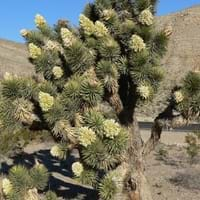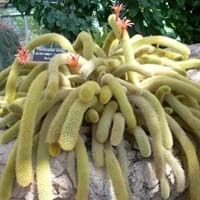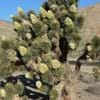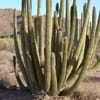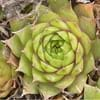Life Span
Perennial
Perennial
Type
Cactus or Succulent, Tree
Cactus
Origin
Southwestern United States, Mexico
Not Available
Types
Not Available
Not Available
Habitat
Desert, Dry areas, Rocky areas, Sandy areas
Not Available
USDA Hardiness Zone
6-10
12-15
Sunset Zone
9, 10, 11, 12, 13, 14, 15, 16, 18, 19, 20, 21, 22, 23
12, 13, 21, 22, 23, 24
Habit
Upright/Erect
Upright/Erect
Flower Color
White, Ivory
Red, Orange, Salmon
Flower Color Modifier
Not Available
Not Available
Fruit Color
Light Green
Not Available
Leaf Color in Spring
Gray Green, Dark Green
Not Available
Leaf Color in Summer
Gray Green, Dark Green
Not Available
Leaf Color in Fall
Gray Green, Dark Green
Not Available
Leaf Color in Winter
Olive, Gray Green, Dark Green
Not Available
Leaf Shape
Linear
Succulent
Plant Season
Spring, Summer, Fall, Winter
Spring, Summer, Fall, Winter
Sunlight
Full Sun
Full Sun
Growth Rate
Very Slow
Not Available
Type of Soil
Loam, Sand
Loam, Sand
The pH of Soil
Acidic, Neutral, Alkaline
Acidic, Neutral, Alkaline
Soil Drainage
Well drained
Well drained
Bloom Time
Early Spring, Spring, Late Winter
Spring, Summer
Tolerances
Drought
Drought
Where to Plant?
Ground
Container, Ground, Pot
How to Plant?
Leaf Cutting, Stem Cutting
Seedlings, Stem Cutting
Plant Maintenance
Medium
Medium
Watering Requirements
Allow soil to be completely dry in between waterings, Do not water frequently
Reduce watering in winter
In Summer
Lots of watering
Lots of watering
In Spring
Moderate
Moderate
In Winter
Average Water
Average Water
Soil pH
Acidic, Neutral, Alkaline
Acidic, Neutral, Alkaline
Soil Type
Loam, Sand
Loam, Sand
Soil Drainage Capacity
Well drained
Well drained
Sun Exposure
Full Sun
Full Sun
Pruning
Remove damaged leaves, Remove dead branches, Remove dead leaves
No pruning needed, Remove damaged leaves, Remove dead branches, Remove dead leaves
Fertilizers
All-Purpose Liquid Fertilizer, No fertilizers needed
Fertilize the soil before planting, slow-release fertilizers
Pests and Diseases
Brown Spots, Red blotch
Bacterial Stem Rot, fungus, Mealybugs, Spider mites
Plant Tolerance
Drought, Dry Conditions, Dry soil, Heat Tolerance, Rocky Soil, Sun
Drought
Flower Petal Number
Single
Single
Foliage Texture
Bold
Bold
Foliage Sheen
Matte
Not Available
Attracts
Not Available
Hummingbirds
Allergy
Not Available
Not Available
Aesthetic Uses
Decorating walls
Landscape Designing, Showy Purposes, Wild gardens
Beauty Benefits
Not Available
Not Available
Environmental Uses
Air purification
Air purification
Medicinal Uses
Not Available
No Medicinal Use
Part of Plant Used
Not Available
Whole plant
Other Uses
Not Available
Florist trade and landscaping, Used as Ornamental plant
Used As Indoor Plant
No
No
Used As Outdoor Plant
Yes
Yes
Garden Design
Feature Plant, Rock Garden, Wall
Container, Houseplant, Rock Garden, Wall
Botanical Name
YUCCA brevifolia
Cleistocactus Winteri
Common Name
yucca palm
tree yucca
palm tree yucca
Golden rat tail, rat tail cactus
In Hindi
Joshua Tree
cleistocactus winteri
In German
Joshua Tree
Cleistocactus winteri
In French
Joshua Tree
Cleistocactus winteri
In Spanish
Árbol de Joshua
Cleistocactus winteri
In Greek
Joshua Tree
cleistocactus winteri
In Portuguese
Joshua Tree
Cleistocactus Winteri
In Polish
Joshua Tree
Cleistocactus Winteri
In Latin
Joshua ligno
Cleistocactus Winteri
Phylum
Tracheophyta
Magnoliophyta
Class
Magnoliopsida
Magnoliopsida
Order
Asparagales
Caryophyllales
Family
Agavaceae
Cactaceae
Genus
Yucca
Cleistocactus
Clade
Angiosperms, Monocots
Angiosperms, Core eudicots, Eudicots
Tribe
Not Available
Trichocereeae
Subfamily
Not Available
Cactoideae
Number of Species
Not Available
Season and Care of Joshua Tree and Cleistocactus Winteri
Season and care of Joshua Tree and Cleistocactus Winteri is important to know. While considering everything about Joshua Tree and Cleistocactus Winteri Care, growing season is an essential factor. Joshua Tree season is Spring, Summer, Fall and Winter and Cleistocactus Winteri season is Spring, Summer, Fall and Winter. The type of soil for Joshua Tree is Loam, Sand and for Cleistocactus Winteri is Loam, Sand while the PH of soil for Joshua Tree is Acidic, Neutral, Alkaline and for Cleistocactus Winteri is Acidic, Neutral, Alkaline.
Joshua Tree and Cleistocactus Winteri Physical Information
Joshua Tree and Cleistocactus Winteri physical information is very important for comparison. Joshua Tree height is 610.00 cm and width 300.00 cm whereas Cleistocactus Winteri height is 60.00 cm and width 30.00 cm. The color specification of Joshua Tree and Cleistocactus Winteri are as follows:
Joshua Tree flower color: White and Ivory
Joshua Tree leaf color: Gray Green and Dark Green
Cleistocactus Winteri flower color: Red, Orange and Salmon
- Cleistocactus Winteri leaf color: Not Available
Care of Joshua Tree and Cleistocactus Winteri
Care of Joshua Tree and Cleistocactus Winteri include pruning, fertilizers, watering etc. Joshua Tree pruning is done Remove damaged leaves, Remove dead branches and Remove dead leaves and Cleistocactus Winteri pruning is done No pruning needed, Remove damaged leaves, Remove dead branches and Remove dead leaves. In summer Joshua Tree needs Lots of watering and in winter, it needs Average Water. Whereas, in summer Cleistocactus Winteri needs Lots of watering and in winter, it needs Average Water.
